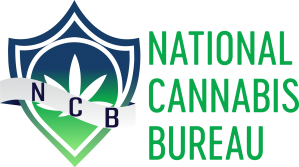A new study published in the journal Neuropsychopharmacology provided results from one of the first modern clinical investigations of its kind to compare the effects of psychedelic drugs lysergic acid diethylamide (LSD) and psilocybin. Researchers recorded few qualitative subjective differences between the two drugs, as test subjects had trouble distinguishing them.
While LSD is much more potent than psilocybin and other psychedelic compounds at lower doses, comparable common doses of the two drugs caused similar effects, as participants had a tough time separating the two from one another. Nor were they able to easily distinguish between medium and higher doses.
The only thing participants were good at identifying, in fact, was which sample was the placebo.
The study was led by the University of Basel’s Matthias Liechti. Researchers observed 28 healthy participants—and about half of the participants had never even taken a psychedelic drug before.
The effects of psilocybin typically last 4-6 hours when taken orally, while LSD effects stretch out up to 12 hours or more. Before going into the data, researchers assumed that participants would be able to separate the two drug experiences fairly easily, as LSD is known to last much longer, but that wasn’t exactly the case.
Study Methods
Each subject completed five different test sessions, with two doses of each drug and a placebo. Subjects were given 100 and 200 µg (micrograms) of LSD, or 15 and 30 mg (milligrams) of psilocybin. Similar research has observed the effects using similar doses of LSD. The sessions were double-blinded, randomized, and each sample was separated by 10 days or more—presumably to isolate the experiences.
A number of physiological and subjective parameters were observed to track the effects of each psychedelic experience. Researchers also monitored blood pressure, heart rate, body temperature, as well as cortisol and oxytocin. Levels of a molecule called brain-derived neurotrophic factor (BDNF) were also observed, as past research suggests it could be an effective marker for neurogenesis.
“Subjective effects that were induced by both doses of LSD and the high 30 mg dose of psilocybin were largely comparable, whereas 15 mg psilocybin exerted clearly weaker effects,” the researchers write in the study. “Ratings of the high 30 mg psilocybin dose were nominally between the 100 and 200 µg doses of LSD, indicating that 30 mg psilocybin corresponds to 150 µg LSD base, a dose that was not tested herein.”
Common doses of both psilocybin and LSD appeared to impact blood pressure, heart rate and so on, in relatively similar ways. “When combining elevations of heart rate and blood pressure into the rate-pressure product, the high dose of psilocybin (30 mg) and both doses of LSD (100 and 200 µg) exerted overall similar cardiovascular stimulation, whereas the 15 mg dose of psilocybin exerted overall weaker effects,” the researchers wrote.
The study reported very effective blinding—meaning that very few subjects correctly picked which drug and dose they had been administered, apart from when they were given a placebo.
“Generally, both the low and high doses were more likely to be confused with each other rather than the high dose being exclusively mistaken for the low dose,” the researchers said. “Interestingly, this was still the case at the end of the study, despite the clear differences in effect durations between LSD and psilocybin that could be expected to unmask the blinding between substances.”
Researchers found the altered states caused by 20 mg of psilocybin to be comparable to the effects of 100 µg of LSD. “The 20 mg dose of psilocybin is likely equivalent to the 100 µg dose of LSD base,” researchers concluded. “We found no evidence of qualitative differences in altered states of consciousness that were induced by either LSD or psilocybin, except that the duration of action was shorter for psilocybin.”
Early LSD and Psilocybin Research
Basel happens to be home to researcher Albert Hofmann’s notorious first intentional trip on LSD. April 19, 1943 is still celebrated to this day as “Bicycle Day” in honor of Hofmann’s bike ride on acid—the first time any person intentionally tripped on LSD.
Most people gravitate towards psilocybin because it is perceived as being in more natural form. But LSD is synthesized from ergot fungus that is known for both psychedelic and dangerously poisonous effects before being processed.
New Atlas reports that pharmacologist Harris Isbell conducted similar observations of LSD versus psilocybin nearly 70 years ago—but his practices were highly unethical. The work was reportedly at the request of the CIA, and allegedly involved nonviolent prisoners in jail on narcotic offenses.
The post Few Subjective Differences Between LSD and Psilocybin Trips, Study Finds appeared first on High Times.
Tridant 4S
Author: Benjamin M. Adams
The post Few Subjective Differences Between LSD and Psilocybin Trips, Study Finds appeared first on Motagistics Seed to Sale Tracking.
National Cannabis Bureau
Author: terry roston

